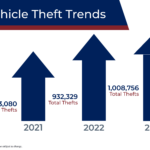The head of the U.S. Department of Homeland Security’s Federal Emergency Management Agency (FEMA) announced that federal disaster aid has been made available in Massachusetts, New Hampshire and Maine to help people and communities recover from the effects of severe storms and flooding earlier this month.
Acting FEMA Director R. David Paulison said the action makes federal funding available to affected individuals in Essex, Middlesex, and Suffolk Counties in Massachusetts; in Belknap, Carroll, Hillsborough, Merrimack, Rockingham and Stafford Counties in New Hampshire; and York County in Maine.
The assistance, to be coordinated by FEMA, can include grants to help pay for temporary housing, home repairs and other serious disaster-related expenses. Low-interest loans from the U.S. Small Business Administration also will be available to cover residential and business losses not fully compensated by insurance.
Federal funding is also available on a cost-sharing basis for hazard mitigation measures statewide.
Residents and business owners who sustained losses in the designated counties can begin applying for assistance by registering online at www.fema.gov or by calling 1-800-621-FEMA(3362) or 1-800-462-7585 (TTY) for the hearing and speech impaired. The toll-free telephone numbers will operate from 8 a.m. to 6 p.m. (local time) seven days a week until further notice.
Following is a summary provided by FEMA of key federal disaster aid programs that can be made available as needed and warranted under the major disaster declaration.
Assistance for Affected Individuals and Families Can Include as Required:
. Rental payments for temporary housing for those whose homes are unlivable. Initial assistance may be provided for up to three months for homeowners and at least one month for renters. Assistance may be extended if requested after the initial period based on a review of individual applicant requirements. (Source: FEMA funded and administered.)
. Grants for home repairs and replacement of essential household items not covered by insurance to make damaged dwellings safe, sanitary and functional. (Source: FEMA funded and administered.)
. Grants to replace personal property and help meet medical, dental, funeral, transportation and other serious disaster-related needs not covered by insurance or other federal, state and charitable aid programs. (Source: FEMA funded at 75 percent of total eligible costs; 25 percent funded by the state.)
. Unemployment payments up to 26 weeks for workers who temporarily lost jobs because of the disaster and who do not qualify for state benefits, such as self-employed individuals. (Source: FEMA funded; state administered.)
. Low-interest loans to cover residential losses not fully compensated by insurance. Loans available up to $200,000 for primary residence; $40,000 for personal property, including renter losses. Loans available up to $1.5 million for business property losses not fully compensated by insurance. (Source: U.S. Small Business Administration.)
. Loans up to $1.5 million for small businesses that have suffered disaster-related cash flow problems and need funds for working capital to recover from the disaster’s adverse economic impact. This loan in combination with a property loss loan cannot exceed a total of $1.5 million. (Source: U.S. Small Business Administration.)
. Loans up to $500,000 for farmers, ranchers and aquaculture operators to cover production and property losses, excluding primary residence. (Source: Farm Service Agency, U.S. Dept. of Agriculture.)
. Other relief programs: Crisis counseling for those traumatized by the disaster; income tax assistance for filing casualty losses; advisory assistance for legal, veterans benefits and social security matters.
.
Assistance for the State and Affected Local Governments Can Include as Required:
. Payment of 75 percent of the eligible costs for repairing or replacing damaged public facilities, such as roads, bridges, utilities, buildings, schools, recreational areas and similar publicly owned property, as well as certain private non-profit organizations engaged in community service activities. (Source: FEMA funded, state administered.)
. Payment of 75 percent of the eligible costs for removing debris from public areas and for emergency measures taken to save lives and protect property and public health. (Source: FEMA funded, state administered.)
. Payment of 75 percent of the approved costs for hazard mitigation projects undertaken by state and local governments to prevent or reduce long-term risk to life and property from natural or technological disasters. (Source: FEMA funded, state administered.)
How to Apply for Assistance:
. Those in the counties designated for assistance to affected residents and business owners can begin the disaster application process by registering online at www.fema.gov or by calling 1-800-621-FEMA (3362) or 1-800-462-7585 (TTY) for the hearing and speech impaired. The toll-free telephone numbers are available from 8 a.m. to 6 p.m. (local time) seven days a week until further notice. Applicants registering for aid should be prepared to provide basic information about themselves (name, permanent address, phone number), insurance coverage and any other information to help substantiate losses.
. Application procedures for local governments will be explained at a series of federal/state applicant briefings with locations to be announced in the affected area by recovery officials. Approved public repair projects are paid through the state from funding provided by FEMA and other participating federal agencies.
Source: FEMA.
FEMA manages federal response and recovery efforts following any national incident. FEMA also initiates mitigation activities, works with state and local emergency managers, and manages the National Flood Insurance Program. FEMA became part of the U.S. Department of Homeland Security on March 1, 2003.
Was this article valuable?
Here are more articles you may enjoy.

 Report: Autonomous Vehicle Jobs to Exceed 110k in U.S.
Report: Autonomous Vehicle Jobs to Exceed 110k in U.S.  Texas Among Several States Facing New Fire Risks: Weather Watch
Texas Among Several States Facing New Fire Risks: Weather Watch  Johnson Controls Unit to Pay $750M to Settle ‘Forever Chemicals’ Lawsuit
Johnson Controls Unit to Pay $750M to Settle ‘Forever Chemicals’ Lawsuit  National Crime Report Shows Vehicle Thefts Surged to More than 1 Million in 2023
National Crime Report Shows Vehicle Thefts Surged to More than 1 Million in 2023 